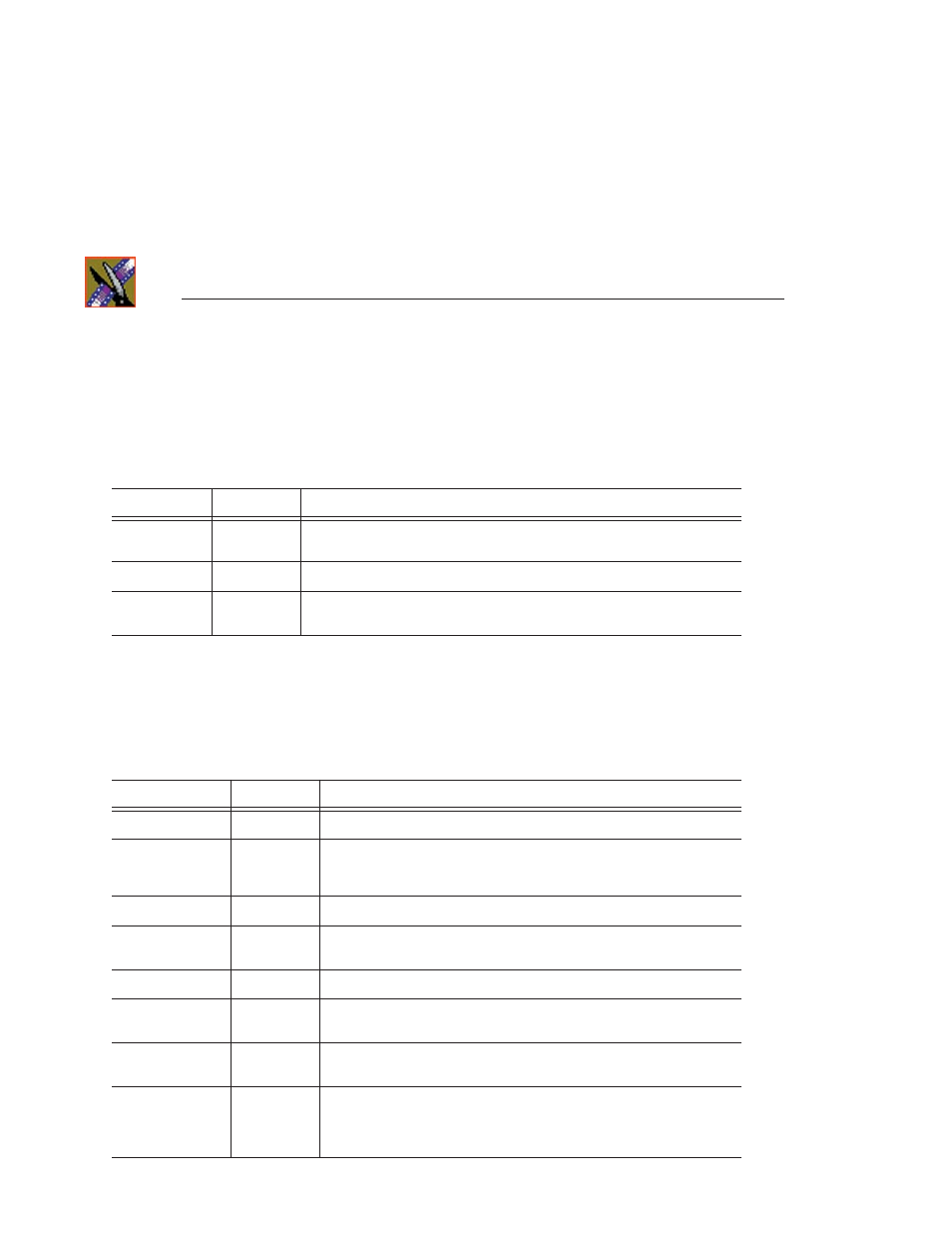Luma key, Chroma key (newsedit xt only) – Grass Valley NewsEdit XT v.5.5 User Manual
Page 288

Appendix Video
Effects
286
Digital News Production
Luma Key
Keying inserts part of one picture into another to create a composite picture.
The Luma Key effect uses the color brightness of an incoming source to specify
where to cut the hole in the background.
Chroma Key (NewsEdit XT only)
The Chroma Key effect detects color (rather than luminance) in a video image
and replaces it with a new background. You can use this effect to put a reporter
sitting in front of a green screen into a background of a mountain scene, making
it appear that the reporter is sitting in front of the mountain.
Option
Range
Description
Clip
0 to 100
Adjusts the luminance (brightness) level in the key signal above which the
foreground or key fill video becomes visible over the background video.
Gain
0 to 100
Adjusts the sharpness of the key edge.
Invert
On or Off
Lets you see the video below the clip level; used for keying from dark
graphics on a light background.
Option
Range
Description
Hue
0 to 359
Sets the color (tint) of the shadow.
Range
0 to 359
Sets the angle of discrimination applied to the chroma when generating
a chroma key; the larger this angle is, the wider the range of colors will
be which result in an opaque key being generated.
Threshold
0 to 125
Specifies the minimum threshold required to generate a chroma key.
Softness
0 to 100
Controls the gain of the chroma key; the larger the value, the greater the
softness.
Suppress
0 to 100
Specifies the angle of chroma suppression used to generate a chroma key.
Luma Suppress
0 to 100
Indicates the amount of suppression applied to the luma when generating
a chroma key.
Chroma Suppress
0 to 100
Indicates the amount of suppression applied to the chroma when
generating a chroma key.
Invert
On or Off
Causes a hole to be cut in the background where a normal key retains the
background, and vice versa; makes the white areas of the key signal
produce transparency, and the black areas produce opacity, the opposite
of a standard key.
